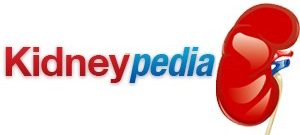Renal calculi or kidney stones are solid crystalline objects formed in the kidneys from dietary minerals in urine. Kidney stones are one type of urinary stone as classified by where they are located in the body (kidney, urethra, or bladder). Urinary stones can also be classified by their chemical composition as calcium-
Causes
The biggest risk factors of renal calculi are dietary. These risk factors include low fluid intake, and also high intake of animal protein, sugars (including high-
It is clear that the ingestion of chemically laden foods and drinks, which are mostly artificially manufactured, greatly increases your risk of suffering from renal calculi. Other risk factors, of which only some are medically proven, include hereditary factors, warmer temperatures and binge drinking. The later two factors also being related to dehydration.
Pathophysiology
Kidney stones form when the urine becomes supersaturated –
Size
How big the kidney stone is goes a long way into determining whether it is a serious problem. Very small kidney stones are normally passed through the urinary system without being noticed, causing no symptoms or risk. When a stone reaches a certain size, however, normally at least 3 cm in diameter, it can cause blockage of a urethra (the muscular tubes that propel urine from the kidneys to the bladder). This can produce severe pain in a region from the flank to the groin, a condition known as “renal colic“.
Symptoms
The main symptom of renal calculi is severe pain which comes in waves (renal colic). This pain is often described as the most intense physical pain a human being can experience, even more severe than giving birth. When symptoms occur, the first priority is usually pain management, for which the patient may be prescribed non-
Other symptoms can include urinary urgency, urinary blood, restlessness, nausea, vomiting, and sweating. You may also experience pain in your abdominal area and testicles (men).
Diagnosis
A kidney stone is normally diagnosed symptomatically, but ultrasound scanning, radiology, and certain blood tests can also be used to identify the presence of renal calculi. A blood test is helpful if you think you may have renal calculi but have not experienced any symptoms yet as it can easily detect certain mineral levels in the blood. A urine sample can also be analyzed for trace elements of suspected crystalline elements.
If you are already experiencing symptoms, a CT scan, MRI or simple x-
Treatment
When a kidney stone is detected, the course of treatment depends on the severity, particularly whether the patient is experiencing symptoms or pain. This typically depends on a few factors such as the size of the stone, whether it is possible for the crystal to pass on it’s own. In some instances the stones may also be growing at a fast rate or severely impeding urine flow resulting in an infection in the bladder or kidneys. In such severe cases, surgical intervention may be necessary. The most common procedure is extracorporeal shock wave lithotripsy (ESWL).
ESWL uses a sonic pulse to break a large kidney stone into smaller fragments that are then passed through the body with less difficulty. The procedure itself is much like an ultrasound, except that the pulses are stronger and more concentrated. Lithotripsy is mainly used in cases where renal calculi are close to the pelvic area.
In instances where the kidney stones are larger, or more near the kidneys themselves, the more invasive percutaneous nephrolithotomy is used. This procedure is more like keyhole surgery where the crystals are removed via a tube (endoscope) which is inserted into the body via a small incision. Similarly, a ureteroscopy, which is basically the same keyhole procedure via the urethra, is used when kidney stones are lodged lower down the urinary tract. Only in the rarest of cases is open surgery (nephrolithotomy) recommended. Exceptions may be if the location of the crystals are difficult to access via an endoscopy.
